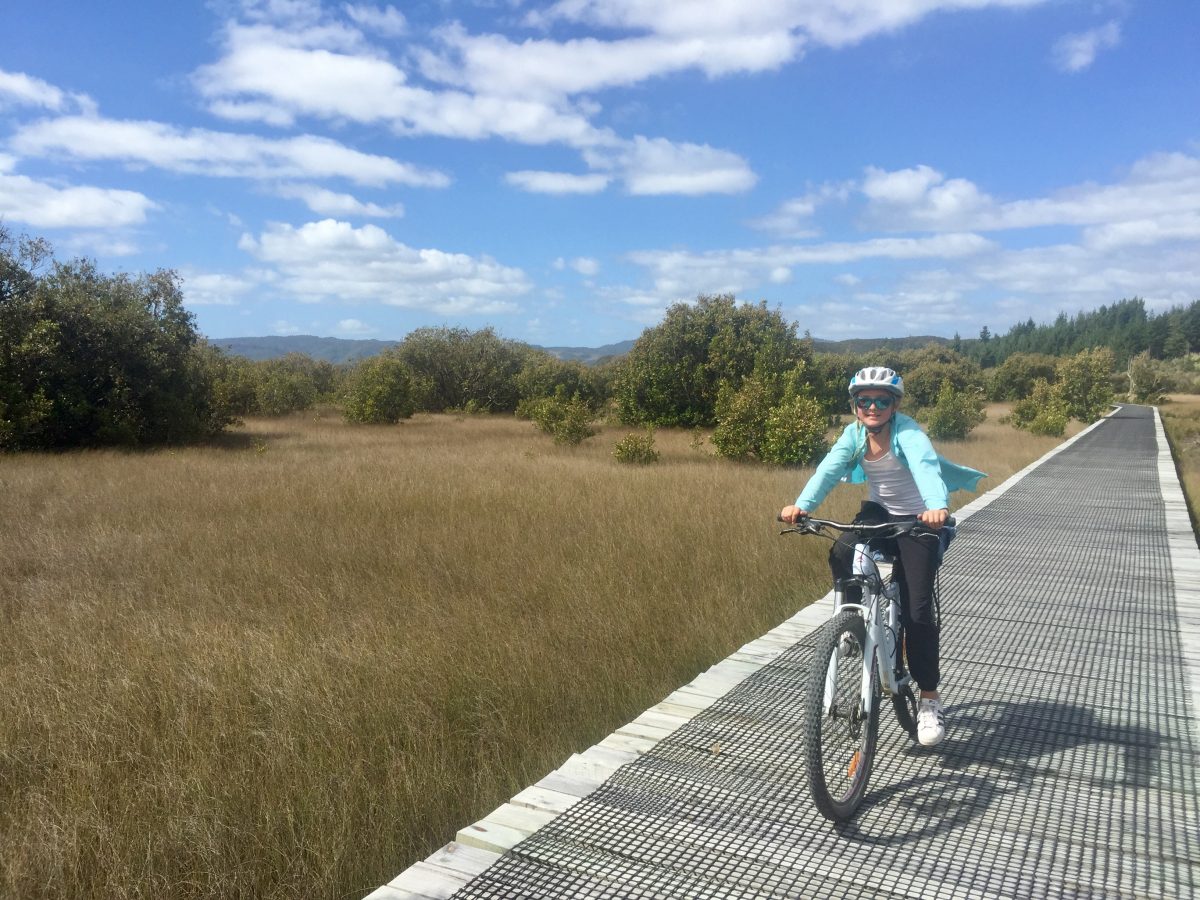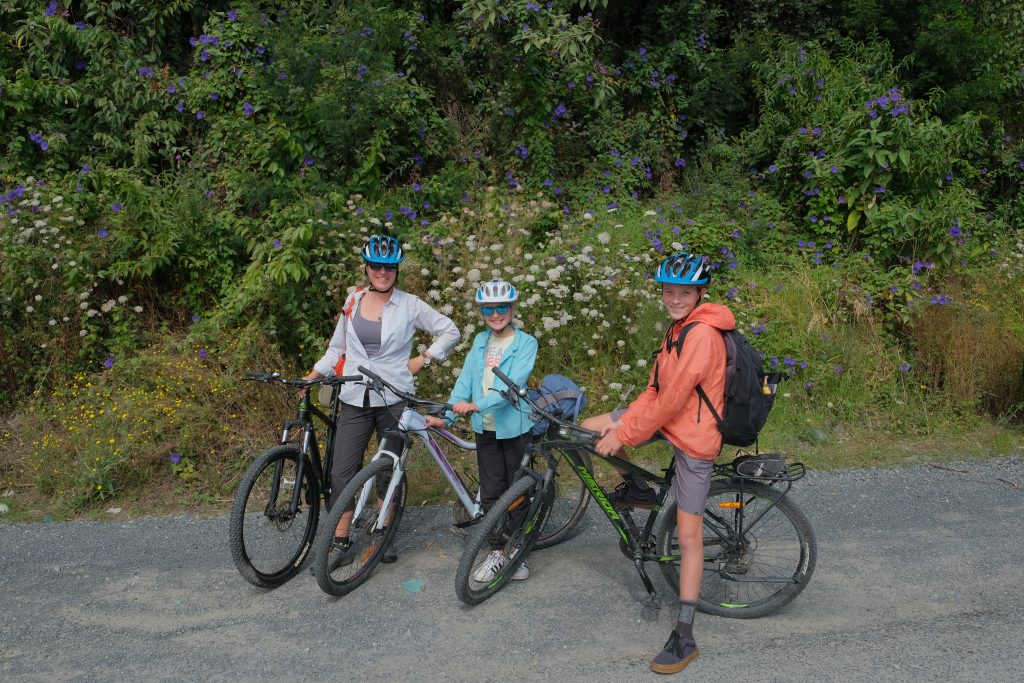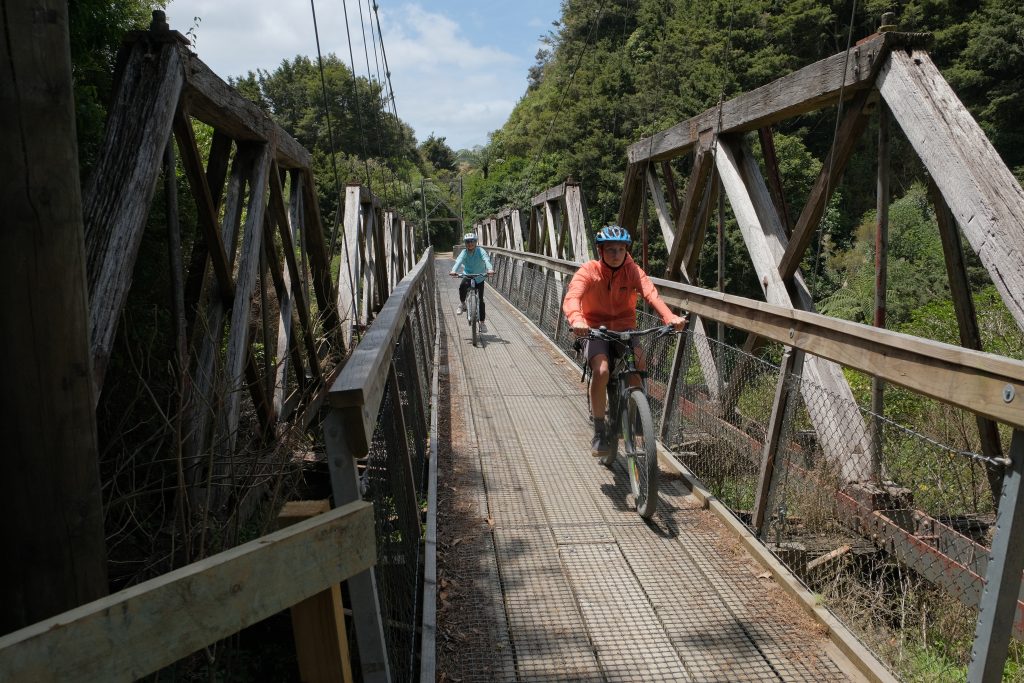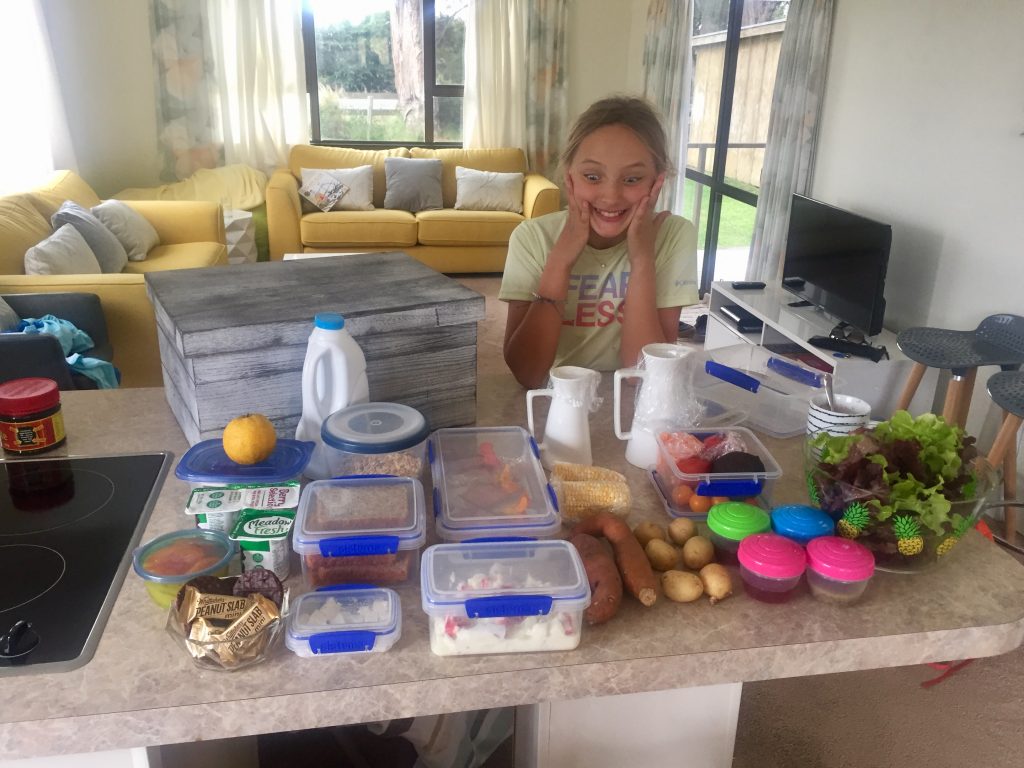January 10 2020
By Siri

Ready to start our ride 
old train tunnel
One of new Zealand’s great cycle treks, the 90 km Twin coast cycle track between Opua in the Bay of Islands and peaceful Horeke in Hokianga Harbour travels by coastal views, wetlands, native forest and rolling farmland through some of New Zealand’s earliest Maori and European settlements. Our shuttle took one and a half hours to bring us to the beginning of our 2-day ride. By 10:30 we were dropped off at the starting point in Opua, we have our back packs on the back of the bike rack and we are ready to go. We start biking on the trail that used to be a railway in the 1880s so here and there you can see little bits of old train tracks. When the train was working it brought lumber and crops to the coast for trade. The scenery is gorgeous along the river and by big fields of farmland. Occasionally dairy cows would stare at us with their big black eyes; awe so cute, I literally fell in love with cows in the past two days. Other times we ride through forests of pine trees or valleys of giant New Zealand flax, and the towering fern trees reminded me of the jungle trees in Costa Rica. Everything was awesome besides the 27 km wind in your FACE! After 50km I was exhausted. Happily, we stayed in the greatest little cottage with great hosts who brought us a tasty “tucker box” so we could prepare a nutritious dinner and breakfast. If you ever stop in Kaikohe, make sure to stop at Mulga Bills Stopover.

cycling through pastureland 
one of many train bridges to cross 
untucked tucker box
Next day we had a fresh start but rode with the sorest behinds in the world. The scenery was stunning and more beautiful than the day before, there was no wind just a breeze and soon the trail was more downhill – Yay! We passed a farm with crazy and curious chickens where are stopped by a creek for a snack. We knew we were nearing the bay when the breeze picked up and carried the scent of the ocean. Soon we reached a long boardwalk through the mangroves with pretty grasses of reddish gold and some sort of fruit trees. On the last kilometer the wind came back to say “hi “, thankfully tires smoothly roll on wood so it was not that difficult. When we reached the hotel, I felt the best feeling of victory! My first long multi-day ride in my pocket.



A LITTLE BIT MORE OF MAORI HISTORY
The Maori sailed from Polynesia and settled in New Zealand around 1200 and they lived closely to the land mainly in the North. Starting in the late 1800s more and more sealing and then whaling ships visited New Zealand, mainly stopping at the Bay of Islands area for food and supplies and rest and relaxation. Here they met the Maori people. Many traders wanted kauri timber for ship building and flax for rope and nets. We saw some of these amazing trees that can live for 3-5 thousand years and it is strange to think the pretty pastures we rode by are areas of cleared forest that is so lush. Because of trade, Māori society changed a lot up to the 1840s. They changed their society from one of subsistence farming and gathering to cultivating useful crops for trade. In February 1840 the British wrote a treaty to negotiate exclusive rights to sale of land by the Maori and a voluntary transfer of sovereignty from the Māori to the British Crown. Our bike ride went through towns where the treaty was debated and signed by the majority of Chiefs, though some refused. This treaty was first signed in Waitangi and then passed through the country for more Maori chiefs to sign. Ever since there has been debate over the interpretation and the translations of the treaty and whether the Maori were given an honest deal.





